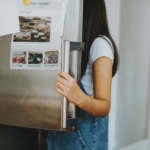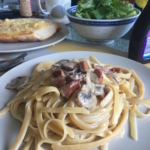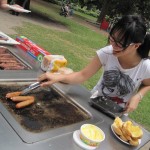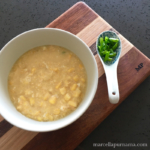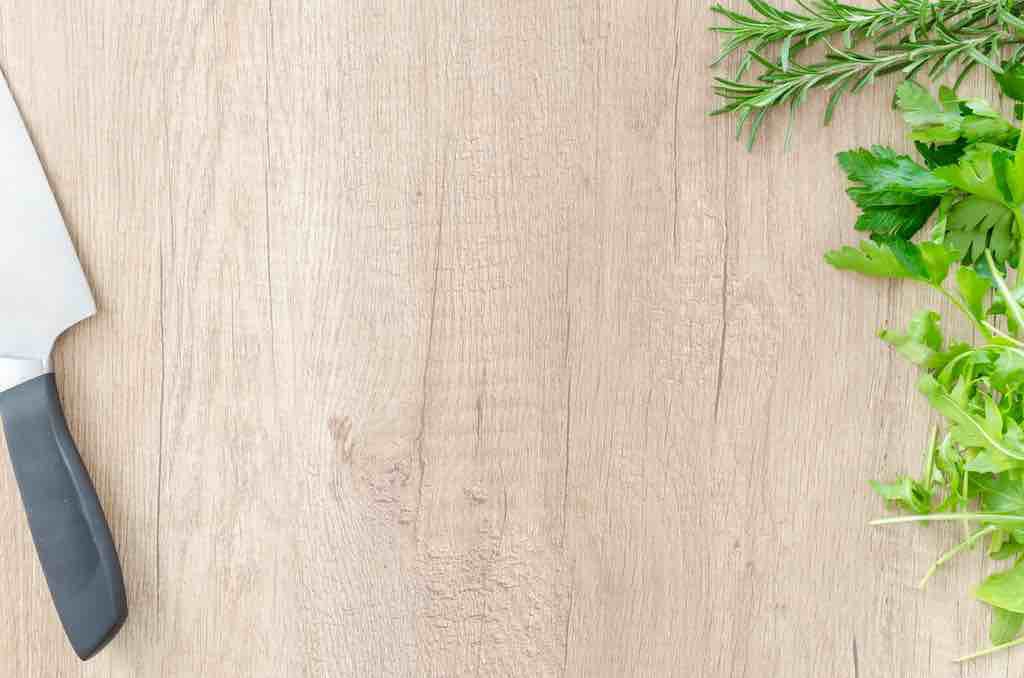
1. IN THE BEGINNING: A GIRL WHO CAN’T COOK
I can’t remember exactly when I first entered the kitchen to cook alongside my mother. But if you want the answer to how many times I’ve been in the kitchen to help my mother cook, I can totally answer that one — a maximum of eight times.
I grew up in a household where my mother stays at home and cooks, yet I never really learn to cook myself. I’m an expert at cooking Indomie Kari Ayam (chicken curry) and for the longest time, that’s the only thing I can cook. I know the exact amount of water needs to be used to make the perfect soup consistency. But I have no idea how to hold the knife to chop garlic.
During junior high school, the only time I would hold a knife was when I was peeling and cutting mangoes. I love mangoes. And for that sole reason, I would be willing to cut mangoes after school when my mother was away, or taking a nap.
My mother often asked me to come help her to cook in the kitchen. I always said no and chose to finish a quest of Final Fantasy VIII on my Play Station 1 instead.
Sometimes, though, I’d come to the kitchen willingly. It was when my mother was baking brownies. She had gotten the recipe from her baker friend, and after eating the brownies for the first time, I was hooked. I learned how to bake brownies when I was fifteen, and it is something I still bake monthly.
When my mother sent me across the ocean to study in Melbourne, she spent a lot of hours trying to pass down the recipes of some of my favourite food: nyupiang (steamed minced pork with pickled veggies), cenlon (steamed egg), pakcamke chicken (steamed whole chicken with garlic and ginger sauce), stir-fried prawns with potatoes, oxtail soup, bak kut teh, semur (braised beef soup), and more. I nodded down while staring at her with disinterested eyes, humming occasionally to give her the impression that I was listening.
She bought a brand new brownies baking tray and brought it to Melbourne, because she knew for sure I wouldn’t be able to find one just like that. She packed various instant spices, afraid that they were not in sale here in Melbourne (they are). When she was here, she went to Victoria Market to get various meat, seafood, fruits, and vegetables, and cooked batches and batches of food, freezing them before she went back to Jakarta, afraid that my sister and I would starve or eat unhealthily. She probably regretted not forcing me to come to the kitchen to cook with her when I had the time, but at least, I would be living with my sister, who arrived in Melbourne four years before me and knows a great deal about cooking.
And at the very, very least, her youngest daughter would still be baking brownies.
Those of you who know my sister would know that she is a highly functioning practical person. Cooking for her is some sort of a chore — at least at that time —it’s something that needs to be done for us to eat, because first, it saves money, and second, it’s healthier than eating out. She is not the type that would pamper her younger sister, or tolerate her antics for that matter, so straight after my mother boarded the plane, she handed me a chopping board and a knife.
So I learned: cooking was part instinct, part experience, and part just putting everything on the pan and hope that it would taste okay.
In the household of the Purnama sisters, stir-fry was the holy grail. Garlic, fish sauce, and pepper were the ultimate combination. Some variations in the kitchen include using oyster sauce instead of fish sauce, or XO sauce instead of oyster sauce, or Thai seasoning instead of XO sauce. The oven was almost never used, except if either of us was baking. And forget deep-frying — it was unhealthy, used too much oil, and was harder to clean.
Necessity, convenience, and practical: these were my first lessons in cooking. If cooking took too long, then it was not worth it. My sister was a fan in saving time. More time equals to more sleep. As a medical doctor, she was (and still is) very fond of her sleeping time.
We went to buy groceries once a week, usually after church on Sunday, and she would almost always get the same things: chicken breast, minced pork/beef, some kind of beef cut (gravy or porterhouse, depending on whether she was thinking to cook stew or stir-fries), bok choy, and mandarins. Occasionally, we’d buy prawns or smoked salmon, but very rarely. If we got tired of bok choy, she’d get green beans, celery, or broccoli instead.
And we always had spam in the house. Spam night, which consisted of seared spam and spam omelette, was our comfort food when we were so lazy to cook anything else.
She would call me on the way home from work, telling me to cook the rice and prep the meat and veggies. I’d usually always wait for her to get home to cook, because once I did the cooking by myself, I accidentally poured the pepper instead of shaking it gently. We finished the awful-taste veggie, and my sister didn’t really comment on it, but I reckoned it was best to just wait for her. Another time, I had put in the exact same sauces that she used on chicken stir-fries but it just came out differently. She had to come and save that one, putting more sugar and dialing back on the fish sauce.
I guess you could say that my cooking was edible. It wasn’t great, but it was okay.
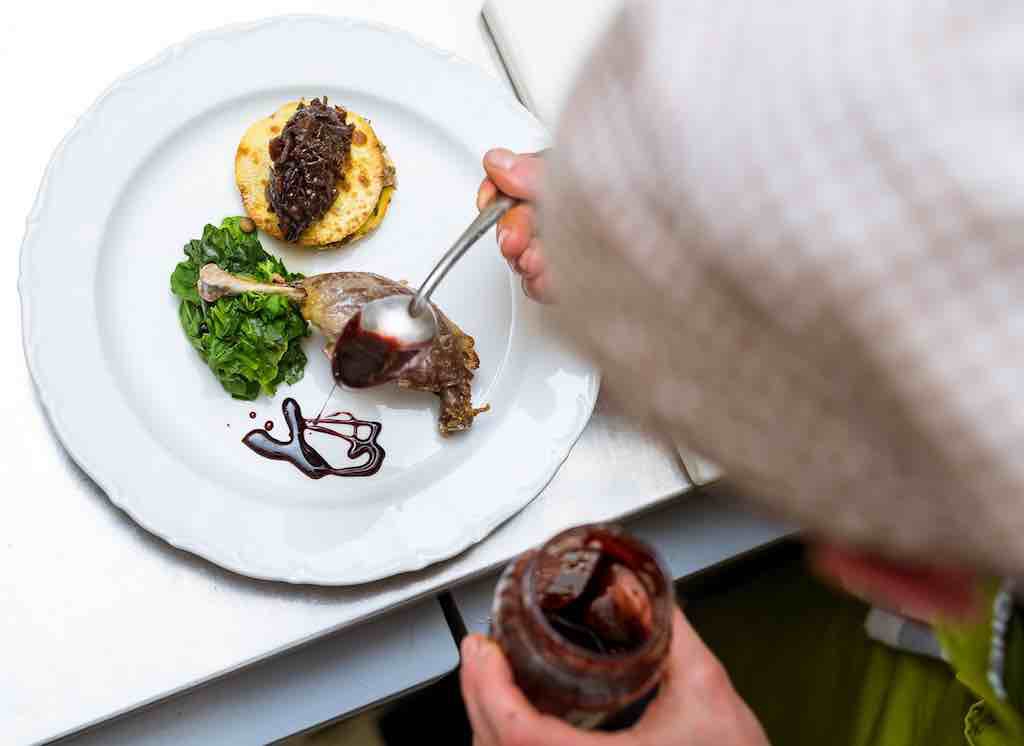
2. WOULD A HOME COOK SOUS VIDE THEIR DUCK?
Seven-thirty on a weeknight is reserved for the TV show that starts it all: MasterChef Australia.
This competitive cooking show gathers 24 home cooks to battle for the title “The best home cook in Australia”, a cookbook deal, and A$250,000 in cash. Their food is critiqued heavily by three judges — from the taste, way of plating, and technique.
I was 18 when I first watched my first season of MasterChef. It was the series that I identified most as Callum’s series, because even though Callum was the runner up who lost to Adam Liaw, he was, in my opinion, the one who left the deepest impression. I still remember his desserts and his down-to-earth attitude (on TV), as well as his flushed red cheeks when he was undergoing pressure. And at that time, he was the youngest contestant in that series, twenty-year-old, and only two years older than me.
My sister and I would eat dinner on the couch, watching the home cooks create pasta dough by hand or the perfect, clear, full-of-flavour consomé.
I would marvel at the way they plate their food — a bit of greens here, roasted stuff there, crackling component at the top. Food was colourful and inviting, although I’d always assume that they were cold by the time it hit the judges’ table.
The contestants are always eager to showcase their techniques. They throw fancy names on how they cook a certain protein. On top of my head, there are sauté, boil, sear, pan-fry, deep-fry, grill, confit, and sous vide.
But who, and I do mean WHO, is sane enough to sous vide their duck at home?
Sous vide is a way of cooking, and I have no idea it exists until I watch MasterChef. It’s a French method of cooking slowly, in a perfectly controlled water bath temperature. A piece of duck breast, for example, would be put in a vacuum-sealed bag and then submerged in the water of exactly 58 degrees Celcius and left for one hour and a half. This kind of cooking says that it would retain the moisture, making the duck super tender and juicy.
To sous-vide a duck and gets it ready for dinner at seven-thirty, you would need to start at six. If time is money, that’s a pretty expensive piece of duck, considering you can just pan-fry the meat for six minutes.
So MasterChef is a cooking show about home cooks, but I don’t think it’s meant for the home cooks in general. It’s, well, entertainment. And for all it’s worth, it teaches us, the uneducated everyday cooks, to comment on food we order in restaurants. We begin to say: “The meat’s undercooked,” or “The fish is overcooked.”
Or as an article in the New York Times aptly said:
“We learn things watching these cooking competitions, but they’re not things about how to cook. There are no recipes to follow; the contests fly by much too fast for viewers to take in any practical tips; and the kind of cooking practiced in prime time is far more spectacular than anything you would ever try at home. No, for anyone hoping to pick up a few dinnertime tips, the implicit message of today’s prime-time cooking shows is, Don’t try this at home. If you really want to eat this way, go to a restaurant. Or as a chef friend put it when I asked him if he thought I could learn anything about cooking by watching the Food Network, ‘How much do you learn about playing basketball by watching the N.B.A.?'”
But probably I was discrediting MasterChef on its impact to my cooking, because against all odds, I was inspired. Not to sous vide my duck, because honestly I’ve not once brought a duck home, but to simply cook better.
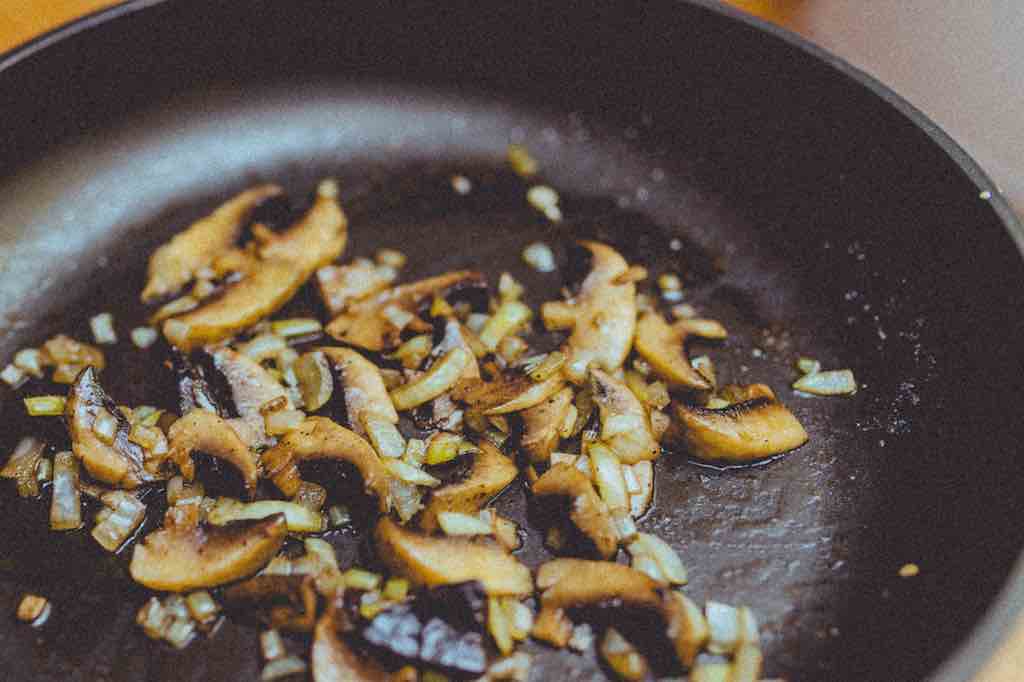
3. HER MOTHER’S DAUGHTER
It all started when my sister got married. I was 23.
In the year leading to the wedding, my sister suddenly became more experimental in her cooking. Not sous vide—type of experimentation, but above stir-fry—type of experimentation. She made pork dumplings, sausage buns, and carrot cake. I long suspected that her perspective on cooking changed because of her still-fiancé at that time. She would spend one or two weeknights cooking at his place, and ironically, I travelled on the same path.
My still-boyfriend at that time would come to my place and have dinner, before heading back to his place at around nine.
The beauty of the internet nowadays allows just anyone to learn how to cook. There is an endless supply of recipes, complete with the how-to videos. But when you don’t know how the food supposed to taste like, you can’t really compare it. Besides, my food craving is never towards new things — not even the wonderfully plated steak with red wine jus on Masterchef — it’s always the childhood food that I ate at my parents’ round table.
So I called my mother and asked how to make pakcamke chicken.
She told me to just “rub the whole chicken with salt”, and steam it for around 20-30 minutes. Then make the sauce: garlic, ginger, fish sauce, sesame oil, and a bit of the stock from the steamed chicken.
It took one hour and ten minutes of steaming before the chicken became fully cooked.
I guess my mother forgot to tell me that the whole chickens she used in Jakarta was half the size of the chickens we had in Melbourne supermarkets.
Then I tried to debone the chicken. It was less skill and more of random cutting. I began to think that this was such a mistake — for it seemed like I was spending too much effort on this. Then I had the first bite, and my boyfriend the other, and it hit me: it tasted like home.
After cooking and deboning a whole chicken, everything else seems, well, less daunting. It’s true: the more you cook, the more you instinctively know how much sauce or spice or which combination of sauce and spice would work together well with which kind of meat.
I called my mother and asked her which sauce to use in cooking nyupiang. I called her again to ask about the type of pork cut used to cook caramelised pork. And the spices for oxtail soup. And the secret behind her amazing chicken porridge.
My mother told me that if I am feeling lazy, I can just use the pressure cooker to cook bak kut teh or hainanese rice. For the longest time, I always said no. Little did I know that pressure cooker is a wonderful piece of machinery created to cook tasty food with minimum fuss. She calls it “the magic pan”, and it is indeed.
Now when I cook, I would always try to have a good dosage of veggies apart from just meat, except during those times when we have Indomie night. I even start to pester the husband to eat more veggies, just because I know he’s not eating those greens enough. There would always be banana or mandarin on a wooden bowl on top the kitchen pantry. I even start to buy apples. In the two decades of my life, I’ve never even once eaten a whole apple. Yet now, at the age of 25, I purposely buy them, mostly for the husband, but I do eat them too.
I become, essentially, my mother.
My mother once told me that she learned to cook when she had kids. She learned because she had to feed the family. In a strange, ironic twist of fate, after surviving on edible food and being indifferent to cooking for years, I finally decide to cook better to feed my little family as well. I rarely leave the dishes in the kitchen sink for more than half a day, and way back when I’d be perfectly content to leave them for two. (Just ask my sister.) I buy discounted cookbooks and pin recipes on my Pinterest board — the modern way of asking friends for recipe, like my mother used to do.
I’ll never be a professional cook, and definitely not a MasterChef. But if I end up like my mother, who has been feeding her husband and three daughters humble but tasty homecooked food for almost three decades, it’ll be enough.
All photos are used with Creative Commons Zero license.

